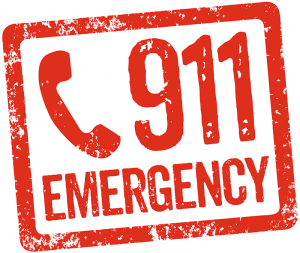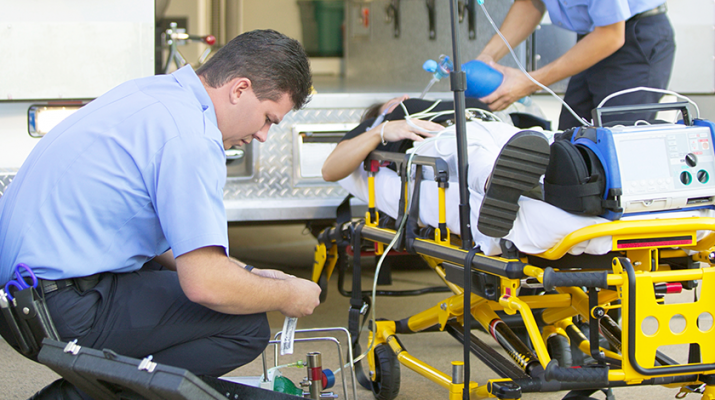Emergency response teams in Buffalo may play more enhanced role
By Ernst Lamothe Jr.
 The winds of change have hit almost every aspect of health care from hospital system mergers to more transparent costs for procedures for patients.
The winds of change have hit almost every aspect of health care from hospital system mergers to more transparent costs for procedures for patients.
The new way of thinking could soon hit emergency service responders.
But while other states like Colorado and California are leading the charge in expanding emergency medical services, New York state lags behind with a bill that has been stalled for more than seven months.
Community paramedicine is a new and evolving model of community-based health care in which paramedics function outside their customary emergency response and transport roles.
Community paramedicine allows services provided by an emergency medical technician, an advanced emergency medical technician or paramedic to patients who do not require emergency medical transportation. It enables someone to get the care they need at home instead of simply having an expensive ambulance fee to drive them to an emergency room, where they will be charged for another fee for that service as well.
If the bill passes, EMS will have a greater scope of services that include checking vital signs, blood pressure screening and monitoring, prescription drug compliance, changing wound dressing, stitching wounds, helping a recently discharged hospital patient reestablish themselves at home and medical reconciliation. It is all an effort to prevent the growing number of people who are using emergency departments as their primary care doctors.
Rural/Metro Medical Services is a respected leader in the delivery of 911 emergency and non-emergency inter-facility ambulance transportation throughout Western New York.
Headquartered in Buffalo, its team of more than 500 certified paramedics, EMTs and other support staff set the standards for medical transportation, patient care, safety and community service with a shared commitment to the patients they serve. Its coverage area includes 20 hospitals and more than 100 nursing home facilities, providing 911 emergency and non-emergency ambulance services in Erie and Niagara counties.
“We propose to amend the public health law to explicitly allow EMS providers to operate in a wider variety of circumstances than they currently do,” said Hugh Chaplin, executive director of the New York Mobile Integrated Healthcare Association. “This legislation will help EMS in New York state to become more patient-centered, more adaptive to changes in health care and more integrated into the continuum of health care delivery and public health.”
Reg Allen, chairman of the Monroe County-Livingston EMS Council, said he believes in community paramedicine. He said in the future, EMS services will have connections locally and regionally as forces in Buffalo, Rochester and Syracuse will begin working together like never before.
‘Just makes sense’
“There is no question in my mind that the opportunity to provide better service when we already have a ready and prepared paramedics force just makes sense,” said Allen. “Because once you call 9-1-1, ambulances are required to take you to only a hospital That eliminates the ability for some of our trained people to take care of you either at your home or drive you to an urgent care, which would cost you less money than an emergency room. It just makes common sense and will increase quality care while reducing the total cost of health care, which is what we are striving to do.”
Sean Burton, national manager of mobile integrated healthcare for American Medical Response, is familiar with the initiative by New York communities such as Syracuse and other Upstate cities for a push in utilizing paramedics in community settings and outreach.
He understands the reason for that push, especially in rural settings, has been one of the reasons why the measure has slowly been gaining traction in Upstate cities.
“I think this is one of the hottest topics right now in our industry,” said Burton. “We need to be locally driven and match the needs of our patients. When any community is dealing with a specific health care population, you can only manage that population if you have the appropriate resources.”
Burton views a day sometime in the future when EMS services have an expanded role in helping patients receive the right resources and educating the public on the necessary uses of emergency services. Any additional role would require advanced training for New York EMS departments.
“We are not looking to increase the scope of practice without that necessary training,” said Burton. “The real focus in the state of care is actually including more medical providers like physician assistants and nurse practitioners into our emergency management systems.”
For example, if the Canandaigua Emergency Service is called out to a home for someone who needs stitches, instead of transporting the individual to the hospital, taking up space in a room for an individual who comes in with a true emergency, the EMS responders can simply suture the patient right in their home.
“Imagine being at home preparing dinner and you go to cut something like an orange and you slip and accidentally slice the palm of your hand and it’s bleeding pretty good,” said Ken Beers, chief of the Canandaigua Emergency Service. “You need some attention and you would normally call 9-1-1 or get inside your car and go to the emergency room. You may need only a couple of stitches and that requires you to go spend maybe six to eight hours in the emergency department. But with this new system that we hope gets approved, a specialized care paramedic can come directly to your house after you call 9-1-1, stitch it up, and connect you with antibiotics if you need it all while you are at home.”
Another advantage is furthering access to communities that struggle to receive it. For nearly 75 million people living in rural areas of the United States, health care needs far outnumber health care options. These communities already include disproportionate number of elderly citizens, immigrants, impoverished families and those in poor health.
“You have people who use the emergency room as their primary doctors. They come in for many things that are not necessary,” said Beers. “There is so much emergency department overcrowding that we hope this system will free them for more urgent needs.

